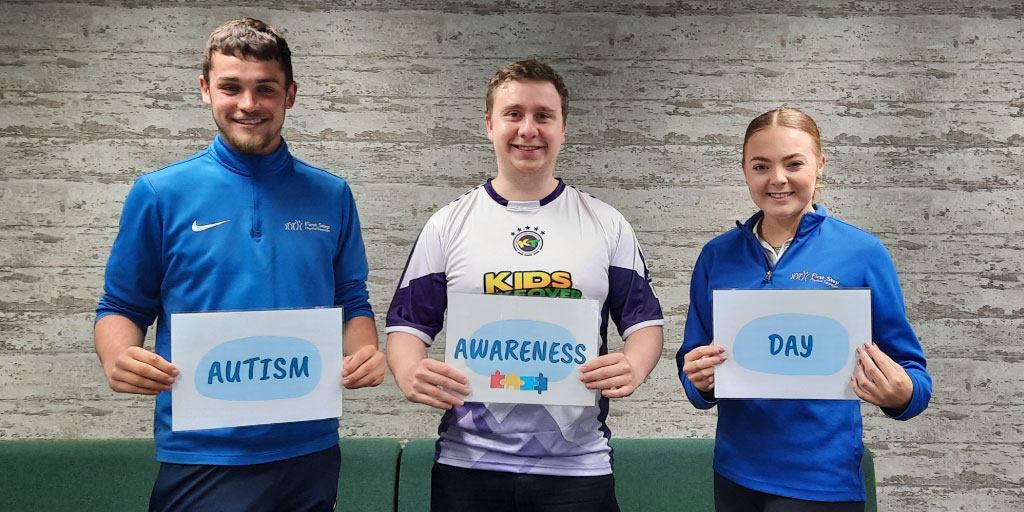As World Autistm Awareness Day approaches, one of the best ways to mark the day, is to prepare what you teach pupils about differently-abled pupils. On April 2nd, mark the day with discussion, empathy, and activities for all learners!
Marking World Autism Awareness Day is a great platform for teaching pupils how to respond to the needs of SEND children. The last few years have been especially difficult for autistic children, with pandemic restrictions changing routines that they often rely on for support.
So how can your school mark the day and help your pupils understand autism better? You can…
Raise awareness by wearing blue
Wearing blue on the day is a simple way to mark the day. Encouraging pupils to wear something blue for the day is a great platform for a fundraising event for the National Autistic Society in the UK for example. The organisation has a range of ways to help support their work and it is a great way for children to engage in charitable events.
Add tactile objects to your lessons with quick explanations of why it helps autistic children feel more comfortable. These are great fun and are often things children will either know of or instantly engage with. Consider collecting a box of bouncy balls and fidget spinners for class for children to try out. It’s a great opportunity for them to see how similar their experiences might be with autistic children.
For autistic children, blue can be a calming colour. For older children, wearing the colour blue can begin conversations on the history, origins, and research into autism. And what about adding a make-and-do project for younger children to mark the day? Making a simple blue puzzle piece can connect an activity they are familiar with, with a universal autism symbol.
Engage with autism in the media & film
Easy to engage with for all Key Stage levels, there are some famous examples of autistic people, in art, media, and books for you to use in class. Why not draw attention to the importance of active travel with Greta Thunberg?
The Swedish teenager who took a stand against climate change is an opportune way to introduce active travel too. Greta used many forms of sustainable transport as a springboard to discussing the immediate action that she felt needed to be taken to reduce the impact of climate change. Many of which, such as cycling and walking, can be brought to your school with the help of Modeshift STARS and First Step Cycle.
Research into autism has found that it often manifests in highly intelligent and creative children. One of the founding fathers of autism research, Dr Leo Kanner famously studied 11 children to discover symptoms of autism. He found that they were intelligent children who lacked an inclination for social interaction. This foundational study in 1943, became integral to understanding how to craft educational environments for those diagnosed with autism at a young age.
Consider showing autistic people or content by autistic creators in the media. Examples include Satoshi Tajiri, creator of Pokemon & Dan Akroyd, a producer, actor, and comedian known for Ghostbusters. You can include an active or creative project here, with a game of Stick in Mud that includes ghosts or even drawing their favourite Pokemon!
A widely accepted positive depiction of autism is Guardians of the Galaxy’s Drax. For autism advocates, his difficulty expressing emotion or understanding idioms was a great example of how those on the autistic spectrum find it difficult to engage with emotion.
Reading books about autism
Reading can help children understand how experiences may differ for children on the autistic spectrum. It can be an accessible way to engage with literacy and empathy skills, making it a great addition to Personal Development (PD) lessons.
Many of the books emphasise the importance of friendship, community, and understanding. Take for example, Ethan’s Story: My Life With Autism, 8-year-old Ethan, is a young boy who wanted to introduce to his classmates what it was like to be autistic. The book includes situations that younger audiences can embrace easily. It is especially useful as it discusses how autism makes him feel from the perspective of sharing it with his peers.
Another book that looks at more of the struggles that younger children have is Since We’re Friends: An Autism Picture Book, written by Celeste Shally. It tells the story of a boy named Matt who struggles with social situations. His best friend in the story helps him cope with general situations such as playing sports or talking about animals. Experiences most children will be able to engage with easily and best of all, his friend provides an empathy blueprint that you can point out the uses of, for children.
Be aware. Be engaged. Be blue. For World Autism Awareness 2022.




